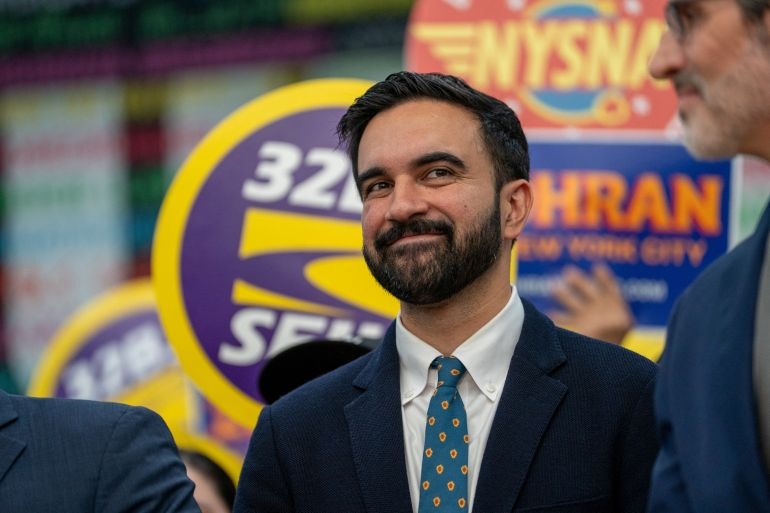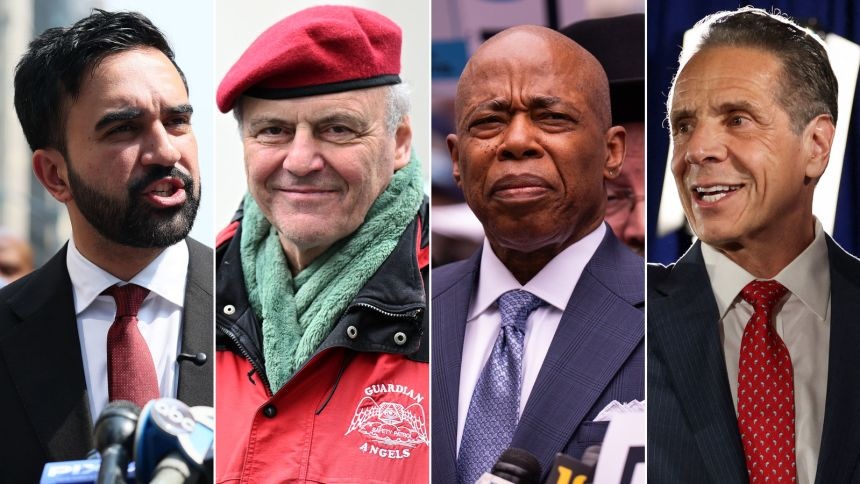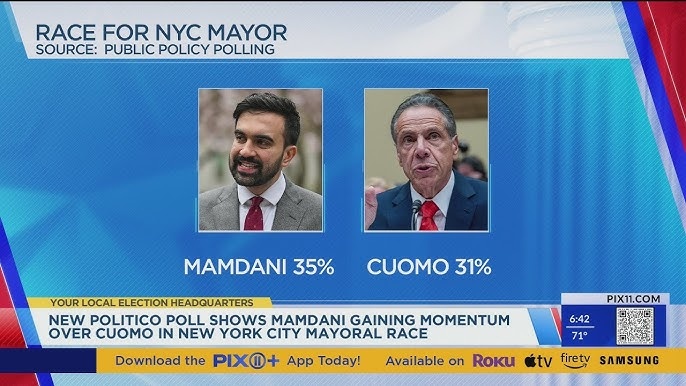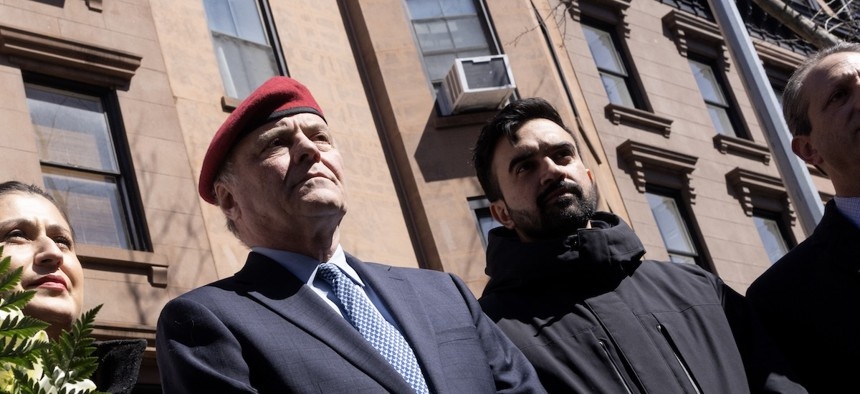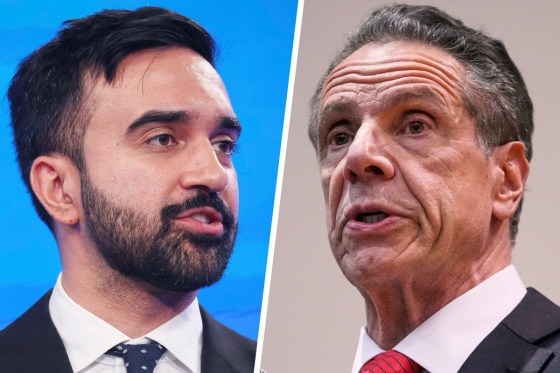Polls conducted in late October and early November showed Mamdani maintaining a lead, though margins have varied by organizer. The New York Times’ interactive polling ledger, which aggregates various survey results, shows Mamdani consistently ahead of Cuomo and Sliwa in most latest tallies, including a late-October AtlasIntel poll that put Mamdani about five points ahead. Across the slate of surveys, Mamdani’s support is strongest among Democrats and younger voters, with Cuomo drawing notable interest from Jewish voters and some former Adams supporters, and Sliwa drawing traction among Republican voters and conservative-leaning independents. The overall picture is one of a tight but persistent Mamdani advantage entering the final stretch of the campaign.
Quinnipiac University’s October poll, released as the race settled into a three-candidate field, gave Mamdani 46 percent, Cuomo 33 percent, and Sliwa 15 percent among likely voters, reflecting the easing of Adams’ influence as Cuomo attracted a large share of the former mayor’s supporters. The poll also highlighted demographic patterns: Mamdani’s strength remained among Democrats and Asian American voters, while Cuomo drew stronger support from Jewish voters and Sliwa’s base leaned Republican. Analysts noted that while Cuomo’s support grew by absorbing Adams supporters, Mamdani still held a substantial lead in the race overall.
The field’s composition has its roots in the ongoing landscape of New York City politics. Mamdani, Cuomo, and Sliwa are the principal contenders in a race that features a mix of party lines and cross-endorsements, with Working Families and other nominations also registering in earlier stages of the campaign. The race has drawn attention not only to individual policy priorities but also to how a divided field might shape turnout and coalition-building in a city accustomed to competitive, multi-candidate contests.
Beyond polling, the election calendar provides practical context for voters. The New York City Board of Elections outlines key dates for the November 4, 2025 general election, including the last day to apply online or by mail (October 25, 2025), the in-person deadline (November 3, 2025), and ballot return rules (postmark by November 4, 2025 or drop-off by 9 pm on election day). Early voting runs from October 25 to November 2, 2025, with additional options to drop off ballots at county election offices or early voting sites. The schedule underscores the importance of timely engagement as campaigns press their messages across housing, safety, and urban policy.
In public forums and interviews, the candidates have sparred over core city concerns. A BBC report highlighted the three-way sparring over housing policy, city noise, and even national issues such as Trump, illustrating how local and national debates intersect in a race that still orbits around practical governance for a city of Manhattan’s scale and Brooklyn’s diversity. As the campaign enters its final weeks, observers say turnout will be crucial in deciding whether Mamdani’s polling lead translates into victory or if Cuomo’s appeal to specific constituencies can close the gap.
Whether the election will reshape the city’s policy direction remains a central question for residents and analysts. With general election day set and the battleground defined by three distinct paths to office, the outcome could influence a broad range of urban priorities—from affordable housing and neighborhood noise management to policing and public services—well into the next administration.



